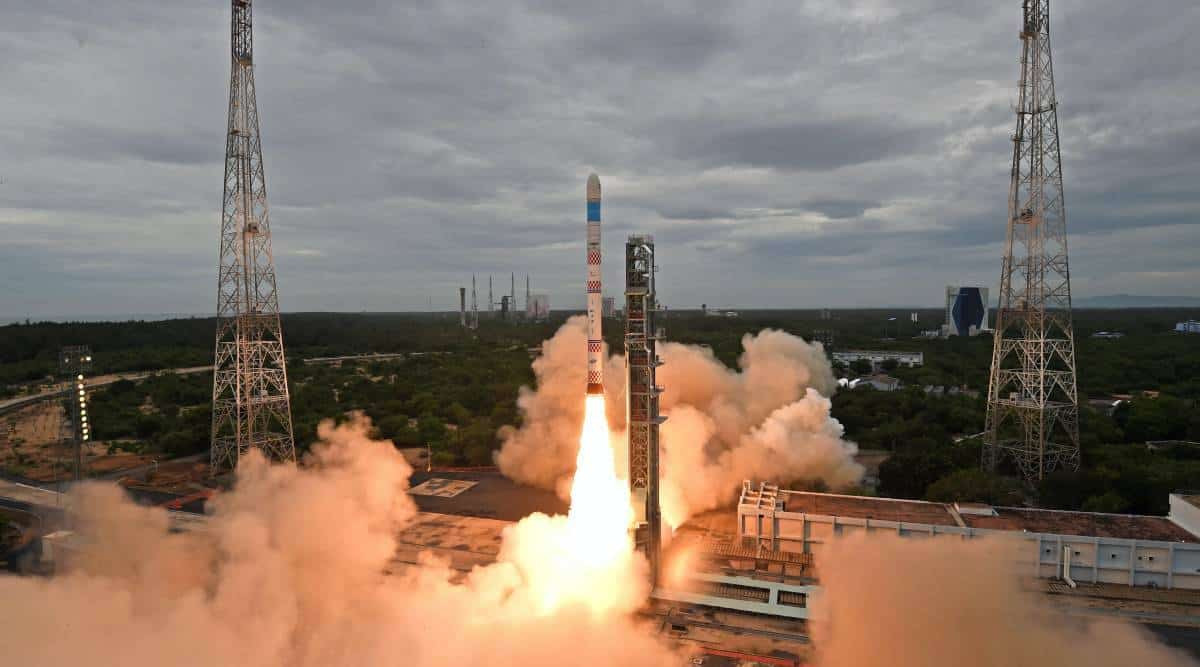
For Indian space scientists, ‘the failure of the first flight of a newly developed launch vehicle is becoming a norm’.
It is strange but true. The failure of the Small Satellite Launch Vehicle (SSLV-D1) on August 7, though unexpected, is in keeping with the track record of the Indian Space Research Organisation (ISRO) over the past 40 years.
It all started from the country’s maiden attempt to launch a satellite using its own Launch Vehicle, the SLV-3 rocket in 1979 going disastrously wrong and it landing in the Bay of Bengal.
Coincidentally, that launch mission was also in August. Within a year, in 1980, ISRO scientists, under Mission Director, A P J Abdul Kalam and Chairman, Satish Dhawan made amends and achieved success.
Thereafter, the ASLV ( Augmented Satellite Launch Vehicle) in 1992, the PSLV (Polar Satellite Launch Vehicle) in 1993 and the GSLV (Geosynchronous Satellite Launch Vehicle) in 2001, tasted failure in their first attempts.
The SSLV-D1, launch
Much was expected of the Small Satellite Launch Vehicle’s (SSLV-D1) maiden spin up on Sunday. The countdown, launch and all three stages of the journey from the Satish Dhawan Spaceport in Sriharikota went as per the calculations of the ISRO scientists only to ‘deceive’ in the final moments.
The SSLV was carrying the 135 kg Earth Observation Satellite (EOS-02), the main payload and AzadiSat was declared a failure as the satellites did not reach the assigned orbit.
The dreams of the 750 schoolgirls who built the satellite named ‘AzadiSat’, which was piggybacking on the EOS2 lay shattered. The AzadiSat was a microsatellite weighing just 8 kg and was to symbolise the celebration of 75 years of Indian Independence under the Chennai-based, SpaceKidz India. It was embedded with 75 different payloads, each weighing 50 gm. Girl students selected from 75 schools in rural areas were guided to build them. SpaceKidz India integrated the payload and the ground system to receive the data.
The ISRO scientists at the mission control centre said “After analysing data, it’s clear that the satellites are no longer usable as the SSLV-D1 placed the satellites in the wrong orbit. Instead of the 356 km circular orbit, they were put in 356 km x 76 km elliptical orbit.”
The ISRO Chairperson, Dr S Somnath said, “ We had in the terminal phase of the mission some data losses and we are analysing it.”
The Space Agency said a Committee will analyse the entire mission and make recommendations. Post, the exercise the ISRO will come back with SSLV-D2, a new launch vehicle at the earliest, it said.
The lucrative small satellites market
The SSLV D1, is a all new vehicle designed by the ISRO with an eye in the lucrative and growing global market for small satellites. With an investment of Rs 170 crore, it has been under development over the last 5 years.
The new rocket stood 34 meters high, weighed about 120 tons with the ability to place a payload of 500 kg into a low Earth orbit of about 350-400 km above earth. It is a three-stage rocket powered with solid fuel.
The ISRO needs to demonstrate its technological and commercial capabilities by at least three successful launches. Thereafter, the private players in the domestic space industry could take over.
In the past two years, the private industry and startups have evinced keen interest, made investments and achieved some strides in the launch vehicle, satellite building and other enabling technologies.
According to a recent Bloomberg report, the global small satellite industry was estimated at $3.25 billion in 2020, and was anticipated to grow to a whopping $13.71 billion by 2030.
Projections are that thousands of small satellites will be launched this decade.
Most of them in the commercial sphere with data collected in areas of communication, surveillance and commercial use. The size and weight would range from a few kg to a maximum of 1000 kg.
Globally, Elon Musk’s, Space X has been successful in launching hundreds of small satellite at a time and is the market leader.
The ISRO Chairman was quoted in the media, “SSLV is designed for large scale production, flexible integration and minimal tests prior to launch. In fact, full rocket can be rested and kept in storage.” The SSLV is so configured that it can carry up to 64 small satellites in each launch.
ISRO’s record of failures
The less than anticipated success of the SSLV D1 today casts a shadow on the ‘homegrown’, all new rocket launcher, which was being touted as the future mainstay of India’s ambitious space journey. So far, the PSLV has been powering on tirelessly, with nearly 55 launches and over 50 of them successfully over the last, nearly 3 decades.
India began its satellite journey with the launch of the Aryabhatta on April 19, 1975. But, it was achieved using the Soviet rocket launcher-Kosmos 3M from Soviet Union.
The first indigenous effort was made in August 1979 with the SLV-3. It was intended to reach a height of 400 km above the earth and place a 40 kg satellite into space. The experimental flight failed.
The ISRO scientists worked hard and came back with a new vehicle with a year. In July 1980, after sorting out the problems, they succeeded in putting the 35/kg Rohini satellite into space.
Then came the two in a row failures of the Augmented Satellite Launch Vehicle (ASLV) before the ISRO turned lucky, on its third attempt in 1992.
The most ambitious projects of the ISRO during the 1990s were the development of the PSLV and the GSLV. Once again, failure hit the space agency in the first trial of the PSLV in 1993. Parallely, the development of the cryogenic engine based GSLV ran into trouble with the US denying India the technology transfer.
But, the ISRO scientists, now known for their resilience, frugal technology and ability to learn quickly from mistakes mastered the PSLV.
After grappling with the denial regime and getting some cryogenic rockets from Russia, ISRO toiled for years to develop the first GSLV. Yet again, it’s maiden development launch in April 2001 proved to be a failure as the payload (GSAT-1) did not reach the intended orbital parameters.
In the decades after the GSLV development story continues to be a mixed bag of successes and failures. But, India has made considerable headway in the commercial launch vehicle market and promises to be a bigger player.
Somasekhar Mulugu, former Associate Editor & Chief of Bureau of The Hindu BusinessLine, is a well-known political, business and science writer and analyst based in Hyderabad

